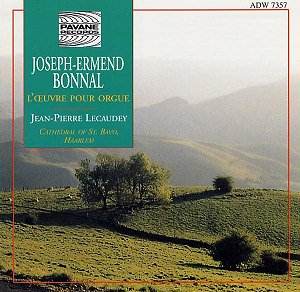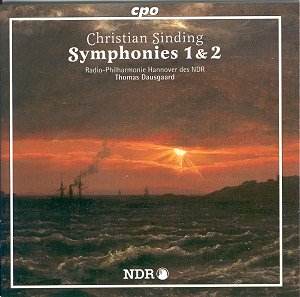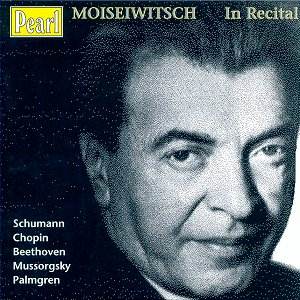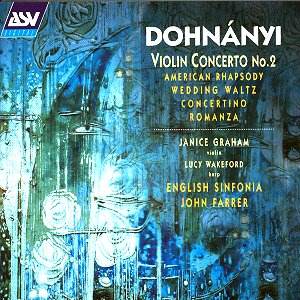 Composer: Joseph-Ermend BONNAL (1880-1944)
Composer: Joseph-Ermend BONNAL (1880-1944)
Works: Paysages Euskariens (1931), Noël Landais (1918), Paysage Landais (1904), Petite Rhapsodie (1898), Reflets Solaires (1905), Symphonie pour Grand Orgue d’Après ‘Media Vita’ – Répons du temps de la Septuagésime (1932)
Performers: Jean-Pierre Lecaudey, organ
Recording: Grandes Orgues Adema de la Kathedrale Basiliek St Bavo a Haarlem
Label: Pavane ADW 7357 [54.09]
Joseph-Ermend Bonnal remains a somewhat obscure figure within the rich tapestry of French romantic-impressionistic music, yet his organ works present a compelling case for reevaluation. This recording showcases a selection of his compositions that span his career, revealing his melodic ingenuity and pastoral sensibilities. The organ, a central instrument in the liturgical and concert traditions, serves as an ideal canvas for Bonnal’s nuanced textures and emotive landscapes, and Jean-Pierre Lecaudey’s interpretation breathes life into these largely unheralded pieces.
Lecaudey’s performance navigates the delicate balance between Bonnal’s impressionistic influences and the more structured elements of French organ tradition. The opening piece, “Paysages Euskariens,” delights with its vibrant colors and fluidity, particularly in “Cloches dans le ciel,” where Lecaudey deftly captures the pictorial essence of the music. His registration choices are particularly effective here, allowing for a kaleidoscope of sound that evokes the imagery of bells shimmering against a backdrop of pastoral serenity. This contrasts sharply with the introspective nature of the “Symphonie,” which unfolds with a more austere character. Lecaudey’s sensitive touch in the first two movements reveals an inward journey, marked by a poignant lyricism that suggests a deep spiritual reflection.
The engineering of this recording merits commendation as well. The acoustics of the Kathedrale Basiliek St Bavo complement the organ’s sonority, allowing for a resonant yet clear sound that captures the intricacies of Bonnal’s writing. The spaciousness of the recording enhances the effect of the organ’s color palette, particularly in “Reflets Solaires,” where the interplay of light and shadow is mirrored in the dynamic contrasts Lecaudey brings forth. The subtle shifts and gentle crescendos provide an immersive listening experience, engaging the audience in a dialogue between the music and its sacred environment.
Bonnal’s works, while perhaps less frequently performed than those of his contemporaries, resonate with a melodic warmth akin to that of Vaughan Williams, particularly evident in the “Petite Rhapsodie.” This piece, with its calming flow, invites listeners to linger in its tender embrace. The “Noël Landais,” with its unpretentious charm, offers a refreshing simplicity that underscores Bonnal’s ability to evoke deep emotion without resorting to grandiosity. Lecaudey’s interpretation underscores this quality, ensuring that each note is imbued with meaning and purpose.
This collection not only illuminates Bonnal’s distinct voice within the French organ repertoire but also serves as a testament to the artistry of Lecaudey. His commitment to championing neglected works is evident, and his interpretative choices invite further exploration of Bonnal’s music. The recording stands as an essential addition to the catalog of early 20th-century French organ works, encouraging listeners to engage with the rich emotional landscape that Bonnal so masterfully crafts. The call for greater recognition of Bonnal’s oeuvre is clear; this recording is an invitation to delve deeper into the treasures of a composer whose music warrants a more prominent place in the concert hall.



